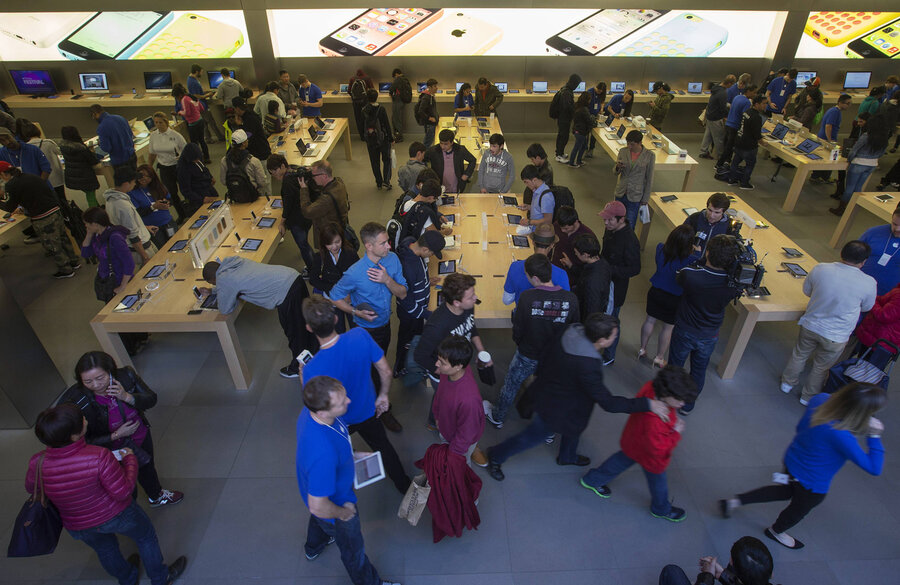Will we see a 5.5-inch iPhone this year? Maybe not, warns one analyst.
Loading...
If the rumors are true, those awaiting the debut of the iPhablet may have to wait until next year.
The Apple iPhone 6 is widely expected to debut later this year. And, rumor has it, in two different versions – a 4.7-inch and a 5.5-inch model. But an analyst has said that the 5.5-inch version, or "phablet" version, is facing production issues and will not become available until 2015, meaning the smaller 4.7-inch version would be released on its own with a larger version delayed until 2015, according to Apple Insider.
Ming-Chi Kuo, an analyst with KGI Securities, revealed these details in a supposed note on Sunday that was obtained by Apple Insider.
According to Apple Insider, Mr. Kuo said Apple has already faced production problems with the 4.7-inch model related to the device's in-cell touch panel and "color unevenness on the redesigned 'iPhone 6' metal casing." These problems will be exacerbated in the larger 5.5-inch size, Kuo told the Insider.
Kuo added he does not think that the 5.5-inch sapphire front panel will "easily pass the drop test near term," which could also cause delays, the Insider notes.
It is important to take these kinds of reports with a grain of salt. Apple Insider's Neil Hughes, who wrote the article, says Kuo "has a respectable track record in revealing Apple's future product plans." Still, his word is no guarantee.
Moreover, headlines about Apple products drive Web traffic. That means the number of Apple reports circulating as the company edges closer and closer to a release date for its highly-anticipated new iPhone will only increase, notes Bloomberg TV.
"This is going to be one of the biggest products we've seen in a long time," Crawford Del Prete, an analyst for market research firm IDC, told Bloomberg TV. He added that in his opinion, details about the new phone's potential to pass the drop test are the most revealing.
"People are going to have to change their expectations on what you can do with a phone and how fragile a phone can be when you've got a piece of glass this big that you use as a phone and as a tablet," Mr. Del Prete told Bloomberg TV.
A video last week published on the technology YouTube channel MKBHD showed what it purported to be a leaked 4.7-inch iPhone 6 screen. In that video, host Marques Brownlee said that the iPhone 6 screen will feature a sapphire crystal display as opposed to the traditional Gorilla Glass, the screen made by Corning Inc. Mr. Brownlee lauded the "zero opacity" of the screen and boasted that he could drag a knife along the screen's surface and it would suffer no contusions, which seems to differ from what Kuo said of the new screen's durability.
In addition to developments on the supposed upcoming iPhone, Kuo told Apple Insider last week that Apple's rumored iWatch is also facing "mass production delays."
Kuo has also said that Apple TV will see an update this fall with a new set-top box that allows for motion control technology that allows for motion control technology, according to Apple Insider.






